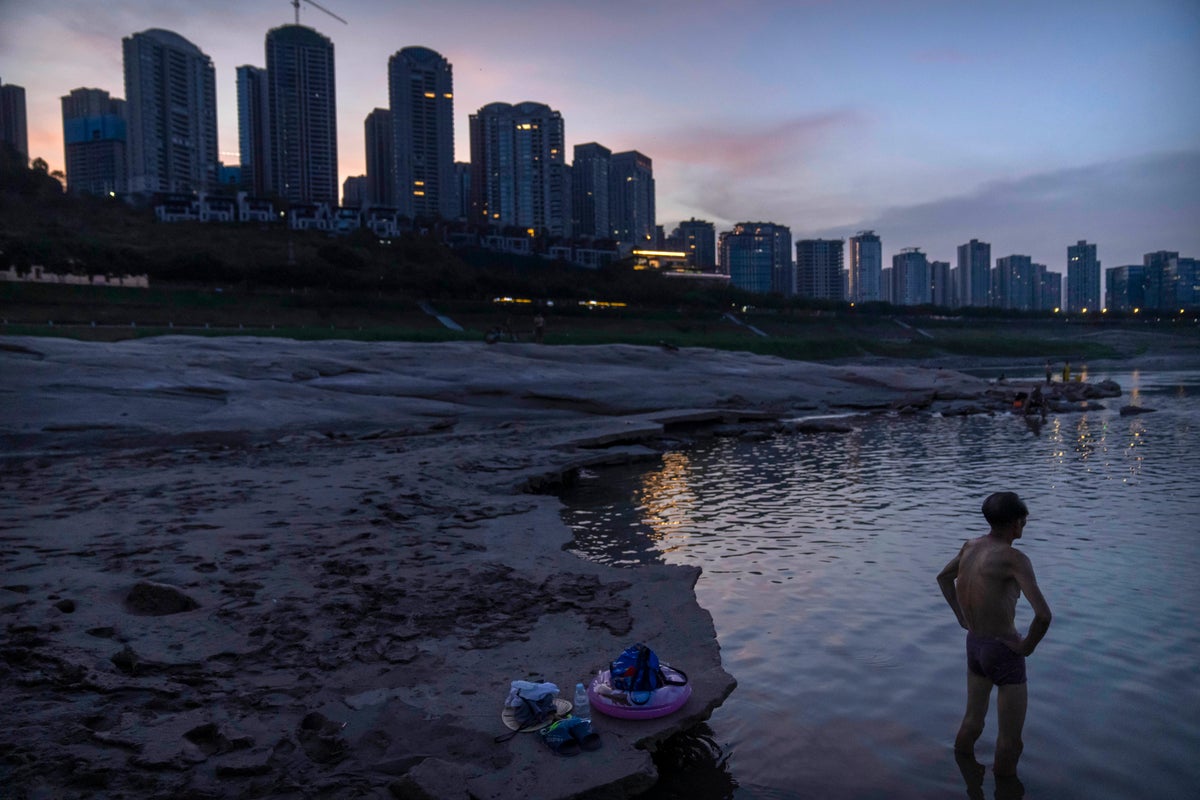
Power rationing that forced factories in China’s southwest to shut down has been extended through at least Thursday due to low water at hydroelectric dams, according to a notice reported by news outlets and a company announcement, adding to losses from the hottest, driest summer in decades.
The “tense situation” of power supplies in Sichuan province “has further intensified,” Tencent News reported Monday. There was no public announcement, but the report included a photo of the government notice to companies.
The drought and heat have wilted crops and caused rivers including the giant Yangtze to shrink, disrupting cargo traffic. State media say the government will try to protect the autumn grain harvest, which is 75% of China’s annual total, by using chemicals to generate rain.
The disruption adds to challenges for the ruling Communist Party, which is trying to shore up sagging economic growth before a meeting in October or November when President Xi Jinping is expected to try to award himself a third five-year term as leader.
Factories in Sichuan that make processor chips, solar panels, auto components and other industrial goods were required to shut down or reduce activity last week to conserve power for homes as air-conditioning demand surged in temperatures as high as 45 degrees Celsius (113 degrees Fahrenheit). Air-conditioning, elevators and lights were shut off in offices and shopping malls.
On Monday, LIER Chemical Co. said in an announcement through the stock exchange in the southern city of Shenzhen that its facilities in the cities of Jinyang and Guang'an in Sichuan received an order extending power rationing through Thursday.
Some companies said earlier that supplies to customers weren’t affected, while others said production would be depressed.
The city government of Shanghai said Tesla Ltd. and a major state-owned automaker suspended production due to disruption in supplies of components from Sichuan.
The government says this summer is China’s hottest and driest since it began keeping temperature and rainfall records in 1961.
Sichuan, with 94 million people, is especially hard-hit because it gets 80% of its power from hydroelectric dams. Other provinces rely more on coal-fired power, which isn’t affected.
Economists say if Sichuan reopens relatively soon, the national impact should be limited because the province accounts for only 4% of China’s industrial output.





!["[T]he First and Fifth Amendments Require ICE to Provide Information About the Whereabouts of a Detained Person"](https://images.inkl.com/s3/publisher/cover/212/reason-cover.png?w=600)

